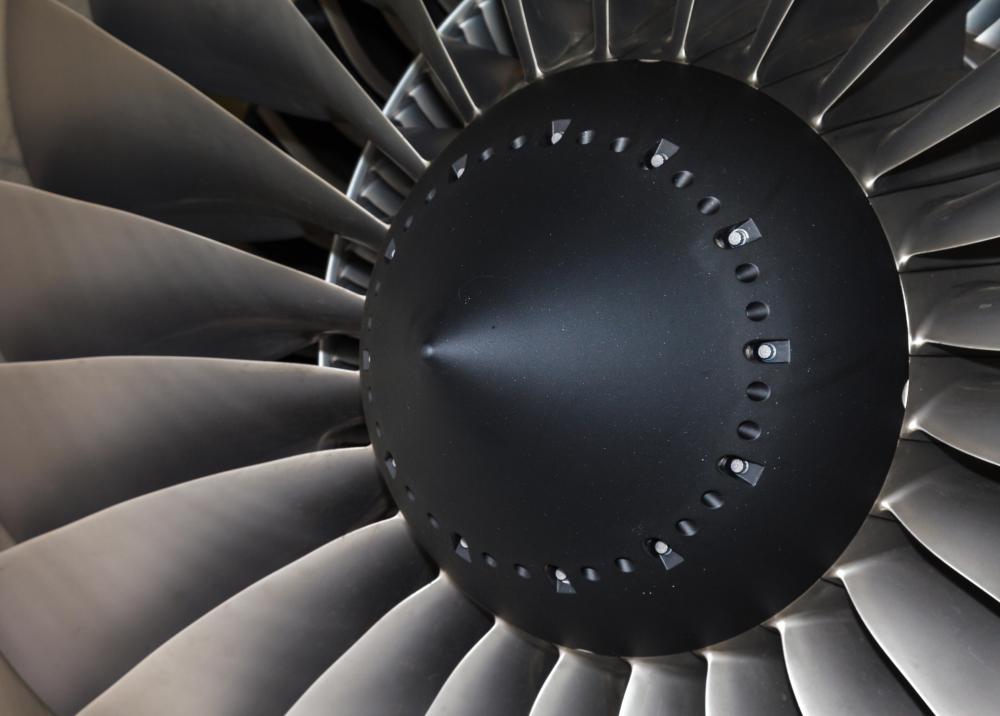At SmartCapitalMind, we're committed to delivering accurate, trustworthy information. Our expert-authored content is rigorously fact-checked and sourced from credible authorities. Discover how we uphold the highest standards in providing you with reliable knowledge.
How do I Calculate Airplane Depreciation?
Depreciation for any business asset depends on the cost of the asset and the useful life classification for that asset. Airplane depreciation is unique because the components of an airplane are depreciated at different rates. First the life of each component is considered, and then depreciation expense is calculated by using an allowable method such as a straight-line, declining-balance, or activity-based method. It is best to consult a tax professional when computing this type of depreciation.
When calculating airplane depreciation, the mechanical structure or the frame of the airplane is based on an estimated useful life of 25 years. Depreciation for the engine and any aircraft parts is based on 10 years of useful life. The undercarriage or landing gear is categorized as a seven-year asset. If there is a salvage value, or value at the end of the business use, then that value is subtracted prior to calculating the depreciation.

The aircraft must be used in a business or trade and be appropriate and essential for the operation of the business for the airplane depreciation to be allowed as a business deduction. In the United States, under Internal Revenue Service regulation, a taxpayer purchasing an airplane for use in a trade or business can expense a portion of the airplane’s original cost prior to calculating depreciation. This is referred to as Section 179 expense.

After the Section 179 expense is deducted in the year of purchase, a method is chosen for calculating airplane depreciation. If the straight-line method is used, the cost of the airplane components is divided by the number of years of useful life. In declining-balance depreciation, a higher percentage of depreciation is used in the early years, with less being deducted in the later years of the life of the asset. Activity-based depreciation depends on how much the asset is used in a year, such as the number of hours in flight.

There are other factors involved in calculating airplane depreciation. If, for example, an aircraft is used both for the business of a corporation and available for charter otherwise, the airplane could fall under two different classifications for depreciation. Also, if the airplane is used partially for personal use and partially for business use, the depreciation must be prorated between the two, and only the business portion is deductible. In addition, if the business use portion falls below 50 percent, then the accelerated method used under the Modified Accelerated Cost Recovery System (MACRS) cannot be used and any previous depreciation that used MACRS will have to be recaptured, meaning added back as income.
AS FEATURED ON:
AS FEATURED ON:














Discussion Comments
@bythewell - Well, to be fair, those are only estimates and they are probably based more on how much flight time a plane gets than simply how old it is. Landing gear that's used twice a day is going to depreciate much more quickly than gear that's used twice a year.
And everything is worth only what you can get for it, after all. If you have a perfectly good set of landing gear that doesn't show any real wear and tear, but is older than the estimated age of use, well, you might not be able to sell it for much, but you'll still be able to use it. It might not count as a financial asset, but it's not a loss either.
It's a good idea to have a depreciation schedule, because that means if you need to replace it, you'll have the funds ready, but I don't think they get replace regardless of if they need to be.
I suppose if you can afford to have an airplane in the first place, you can afford to hire someone to calculate the depreciation for it. I actually had no idea that airplanes were considered to only last that long. Seven years for some of the components! Considering how much I'm sure each part of the plane costs, that seems a huge expenditure.
And then it seems like the part that will live the longest will only be useful for 25 years. With that kind of equipment depreciation, I'm not surprised that plane tickets cost so much.
Post your comments